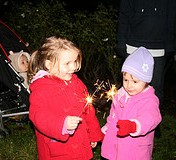We in the United States are making preparations for a July 4th celebration. This always brings thoughts of family picnics followed by firework displays. In some areas fireworks are not allowed except by professionals who prepare brilliant, colorful displays. While in other places, even small children are allowed to participate in this pyrotechnic event.
 If asked to describe “fireworks” most would include loud sounds and brilliant bursts of colors. Both sound and light are forms of energy. A third type of energy that most don’t think about is heat. It’s this last type of energy that I want to start with.
If asked to describe “fireworks” most would include loud sounds and brilliant bursts of colors. Both sound and light are forms of energy. A third type of energy that most don’t think about is heat. It’s this last type of energy that I want to start with.
Few would consider giving a child a burning match to play with. But the burning match which burns at a temperature as high as 1500° F (800° C) is about half as hot as a sparkler. So, why are sparklers considered by many as safe for children?
 Sparklers don’t explode, and thus are generally purchased for children. Sparklers burn at a high temperature (as hot as 1800 to 3000° F, or 1000 to 1600° C), depending on the chemicals used to make them. This can cause devastating burns and can easily ignite clothing. Sparklers don’t explode, and thus are generally purchased for children. Sparklers burn at a high temperature (as hot as 1800 to 3000° F, or 1000 to 1600° C), depending on the chemicals used to make them. This can cause devastating burns and can easily ignite clothing.
CAUTION:
SAFETY SUGGESTIONS:
More Later, Janice |